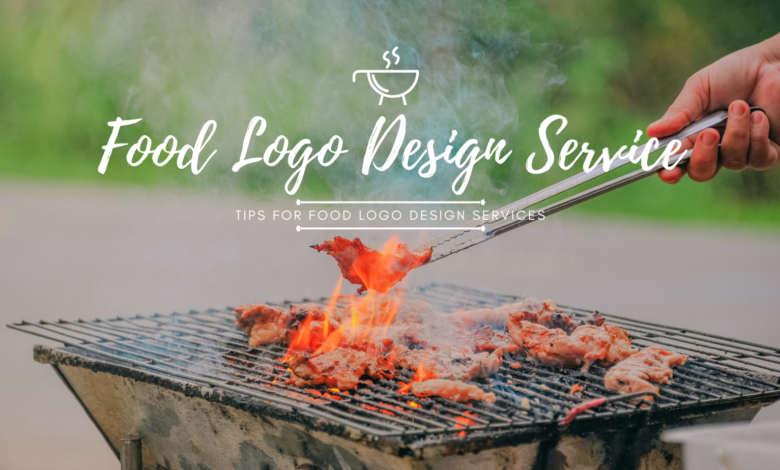
We engage with food regularly, whether it’s when we go grocery shopping or when we open the fridge. You need a strong food logo to support the identity of your restaurant or food business so that hungry clients will be more comfortable making purchases from you. Creative food logo design would always ensure to engage the audience and raise brand awareness. As soon as someone sees the emblem, they quickly realize what kind of food and items are being offered. Logos are also simpler to recognize when driving and seeking a restaurant than reading their names. Always appealing to the audience or the viewer is the goal while creating a cuisine logo. Your food logo must have a playful and appealing aspect. The following suggestions may help you create an inspired food business logo:
Color selection
Color is an essential component of logo design and can influence how people perceive and connect with a brand. When choosing a color scheme for a food logo, it’s important to consider the emotions and values the brand wants to convey, as well as the preferences and expectations of its target audience. For example, a healthy food brand may choose green to represent freshness and vitality. While a fast-food chain may opt for red to evoke excitement and appetite. By using color effectively, a food logo can communicate a brand’s identity and values, making it more memorable and recognizable to consumers.
Incorporate food-related elements
Creative food logo design is a way to create a visual association between the logo and the food industry. By using elements such as utensils, ingredients, cooking tools, animals, or geographical references, a food logo can communicate the brand’s values and specialties. For example, a bakery could use a rolling pin or a bag of flour in its logo to emphasize the use of fresh ingredients and the baking process. Similarly, a seafood restaurant could use a fish or a wave to indicate the freshness and origin of their seafood. Incorporating these elements can also help make the logo more visually appealing and memorable to consumers, helping the brand stand out in a crowded market.
Typography
Typography is crucial in the creation of a food logo since it affects how consumers view the company. The readability of the typeface must be taken into account when choosing typography for a food logo since the brand name must be distinct and readable even at tiny sizes. Additionally, the typographic design needs to reflect the character and principles of the brand. A formal typeface with crisp lines, for instance, may be appropriate for a high-end restaurant, whereas a font with more whimsy and playfulness might be preferable for a dessert business.
Experiment with different layout
Experimenting with different layouts is an effective way to create a distinctive and memorable food logo design. A horizontal layout arranges the logo elements side by side, which is a popular choice for food logos that feature both an icon and the brand name. This layout allows for a balanced composition and can work well for brands with longer names or slogans. A vertical layout, on the other hand, stacks the logo elements on top of each other, which can create a more compact and dynamic design. This layout is often used for logos that feature a prominent icon or a shorter brand name. A circular layout arranges the logo elements within a circular shape, which can create a sense of unity and completeness. This layout is often used for logos that feature a round or circular icon or emphasize the brand’s focus on fresh and natural ingredients. By experimenting with different layouts, creative food logo design effectively communicates the brand’s identity and values, while also standing out from competitors in a crowded market.
Test it on different platforms
To make sure that your food logo design is adaptable and powerful in multiple situations, it is essential to test it on numerous media to check the credibility of logo design services. It’s crucial to take into account the many mediums, such as print, digital, and signs while evaluating your logo. You may assess your logo’s legibility, readability, and scalability in various sizes and formats by testing it on printed items like menus, business cards, or packaging. You may check your logo’s appearance on various displays, resolutions, and devices by testing it on websites and social media. To evaluate the logo’s visibility, contrast, and suitability with the surrounding environment, you can try it on signs or other environmental graphics. . You can guarantee that your logo appears effective and consistent across all platforms by testing it on various mediums, which will aid in creating a strong and identifiable brand identity.
The food industry needs a logo for several reasons:
Brand Identity: A logo is a crucial element in building a brand identity for any business, including those in the food industry. A logo helps consumers identify and remember a brand, and can communicate the brand’s values, personality, and specialties.
Differentiation: The food industry is highly competitive, and a well-designed logo can help a brand stand out from competitors. A unique and memorable logo can help consumers distinguish one brand from another and build loyalty to the brand
Marketing: A logo is a valuable marketing tool that can be used on a range of materials, from packaging to advertising. So a well-designed logo can help create a professional and cohesive look across all marketing materials, building trust and credibility.
Consistency: A logo provides a consistent visual representation of a brand across all touchpoints, from the website to the menu to the storefront. This consistency helps create a cohesive brand experience that strengthens brand awareness and recognition.
Conclusion
A well-designed logo is a critical element for any business in the food industry. A logo is also a valuable marketing tool that creates a professional and cohesive look across all marketing materials. so the food logo should be creative enough to increase brand recognition and familiarity with customers.





